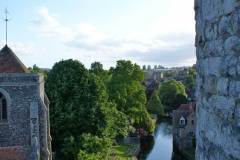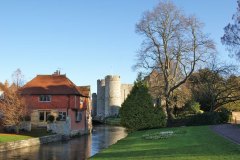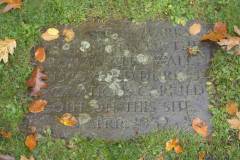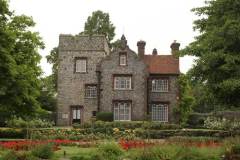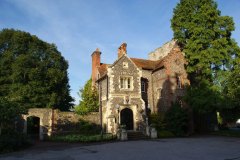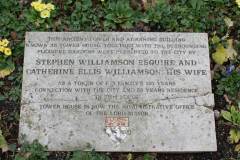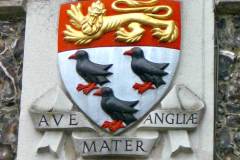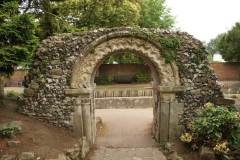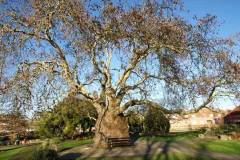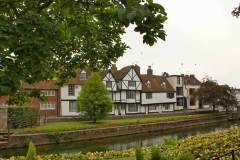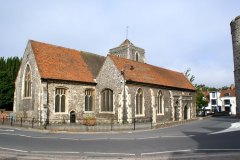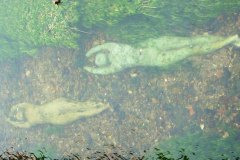Westgate Grove
Introduction
The gardens are a public open space consisting of lawns and gardens along both banks of the River Stour, taking its name from the adjacent Westgate from which the best view of the garden is obtained (Image 1).
History
Most of these gardens were originally submerged under the River Stour along the edge of which ran the Roman city wall. At the western end was London Gate, through which ran Watling Street on the route to London. The wall was was substantially rebuilt in flint between 1378 and 1402, including the bastion which is now Tower House. The wall between Westgate and the Castle was demolished in 1647 following riots in Canterbury during the English civil war, leading to the surrender of the city to the Parliamentarians in 1648. The bastion was probably converted to a dwelling around 1850 and two wings added in 1870. In 1886 it was bought by Stephen Williamson, owner of the local Tannery, who later acquired the gardens and whose family lived there until 1935. In 1936 his grandson Stephen and wife Catherine Williamson gave the house and gardens to the city under a deed which required the space to be preserved as a public space for the benefit of Canterbury residents. Catherine was a city councillor and later became the city’s first woman mayor from 1938-40. She was responsible for demolishing the Victorian wings of the building and laying out the 11 acre gardens as a riverside park and walk. The house is now used as the Mayor’s parlour.
At the Westgate entrance to the gardens ls the city council Guildhall. This building is the redundant church of the Holy Cross built on the current site at the very end of the 14th century. The original church was originally located above the Westgate in a similar arrangement to several other gates in Canterbury. The church was made redundant in 1973 and given to the city by the Church Commissioners, to be converted to it’s current use in 1978.
What to see:
- The view over the gardens from the top of Westgate (Image 1).
- The centre of the gardens looking back to Westgate and the recently extended 17th century brick cottage on the edge of the river, built on the site of a medieval mill (Image 2).
- A plaque identifying the site of the Roman London Gate, located at the south western corner of the gardens (Image 3).
- Tower House (Images 4-5) and the plaque commemorating the gift of the Williamson family (Image 6).
- The arms of city of Canterbury over the entrance to Tower house with a leopard denoting its royal connections, three black choughs from the arms of Archbishop Thomas Becket and the motto “Mother of England” in Latin (Image 7).
- A folly possibly constructed from 11th century Romanesque remains recovered from demolished city abbey or priory (Image 8).
- A 25ft oriental plane tree (Platanus Orientalis), one of five planted in the city, and possibly 200 years old (Image 9).
- A row of 16th century houses at 2-12 Westgate Grove (formerly Cock Lane from the inn at no.4). The slightly later central houses have their gable ends facing the street to increase the number of properties with road frontage and the light entering the upper storeys (Image 10).
- The Guildhall from St Peter’s Place (Image 11).
- A modern sculpture “Alluvia” in the river adjacent to the Westgate entrance (Image 12).
Access: The gardens are normally open from dawn to dusk. Tower House is not open to the public and the Guildhall only for public council meetings.
Sources: Scoffham (1993); Crouch (1970)
SR

